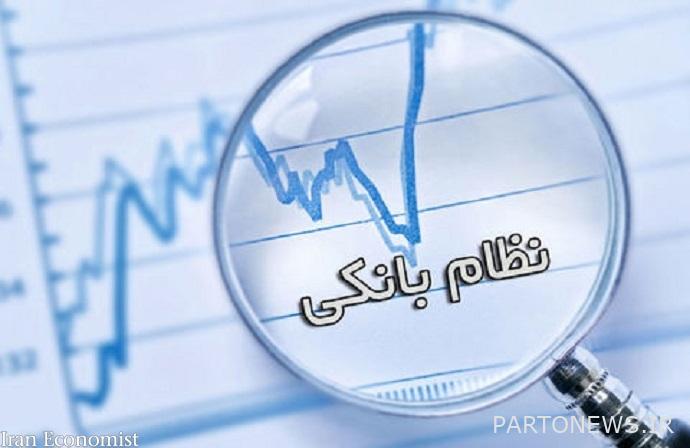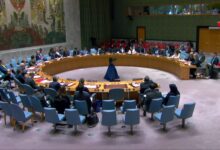Credit guidance, the government’s trump card for reforming the banking system

Economic reform is a precise, difficult and time-consuming process. Obviously, there will probably not be a precise consensus among all experts to determine the starting point for reforms, however. It is historically very extensive, so any significant change in this area would be conceivable at the will of the executive.
Fortunately, the head of the 13th government is well aware of this and has emphasized it many times. In June of this year, Seyyed Ibrahim Ra’isi stated at the same time as the presidential campaign in the Abbasabad industrial town of Tehran: “Reforming the banking system is one of the priorities of the people’s government. “On the one hand, staggering liquidity has become a threat to the country, and on the other hand, the producer is suffering from a lack of liquidity and working capital.” Combining this view with the views of the Ministers of Economy, Silence, as well as the Governor of the Central Bank on guiding the credit system, has revived hopes for the government’s commitment to fundamental reforms in the country’s monetary and banking system.
Production chain financing
A fundamental change in the monetary and financial structure is basically a sensitive and difficult one, because there are many big interests in this field that can bring down any reform idea, so any plan that is prepared in this field should be considered accordingly. Set up challenges. In other words, there should be a plan on the table of the market players that, while guaranteeing profitability, should lead them to complete the development puzzle of the country.
In this regard, a significant action plan that was unveiled in less than four months in the thirteenth government is the supply chain financing plan. The recent memorandum of understanding, signed in cooperation with the Central Bank, the Ministries of Economy and Silence, as well as the participation of seven public and private banks, paves the way for a change in the capitalist system.
This plan can be defined in the context of a larger idea, namely bank credit management; This issue is also emphasized by Ali Salehabadi, the Governor of the Central Bank, and he says that this memorandum is one of the important examples of directing resources and credits to the productive sector of the country.
What is credit guidance?
Various economists have written about this method of financing, but a review of this idea is more readable by the current Minister of Economy and Finance.
Seyed Ehsan Khandouzi writes in a joint article published in 1997: “Direct credit or credit management is a method used by central banks to control the creation of bank credit in order to achieve the monetary policy and industrial policy goals.”
This scientific study adds: “In fact, in the form of this money creation policy, banks serve the purposes of development and economic growth, and the bank, either in the form of an incentive system or in the form of a strict law set by the government, can create money if credit “It should be created to provide facilities to the productive sector designated by the government or the central bank.”
Good, bad, ugly money creation
This article is really about valuing money creation. According to some economists, not all forms of money creation are reprehensible and are divided into several categories depending on the use and the place of impact.
In the first case, if the money created by the banking system is consumed without any increase in the production of goods and services, it will lead to an increase in final demand, which leads to inflation.
In the latter case, the money generated may flow into the financial markets, which could lead to an asset bubble and, if the bubble bursts, destabilize the economy. Many examples of this type of crisis have occurred in different countries and part of last year’s crisis in the Iranian stock market is described in the same context.
But in the third case, if money creation is directed to productive investments, because it strengthens the supply side, it does not reach the stage of bubble formation or inflation.
The missing link in economic policy
In this regard, Abbas Saberi, an economist, raised the question of how to increase the supply of products in proportion to the creation of money. “If bank money is created for the real sector of the economy and productive investments,” he replies. This is where the role of credit management comes into play. Credit management is the missing link in economic policy in our beloved country, Iran, which can simultaneously lead our economy to economic growth with price stability.
“Credit-driven policies can drive us to economic growth, as they streamline banking resources into productive investments,” he said. “It also leads to control over the general level of prices, because it responds to the demand generated by money creation with a commensurate supply of goods and services to the economy, and this is exactly the right response to the pain of our society today, which is in a slump.”
A century history
Guidance policy is 110 years old. Historical studies show that Germany was the first country to benefit from this policy. Later, Japan, South Korea and Taiwan also used this method, so that the policy of interfering in the allocation of credit later became the main factor in the economic miracle of East Asia.
Despite the long history of using this policy in the world, less attention has been paid to this solution in our country. An earlier article stated: “The experience of six development programs in Iran in the last 30 years shows a gradual departure from the pattern of directing bank credits to competitive and profitable enterprises and approaching the model of liberalizing financial markets with minimal government intervention. Guide the facility. However, the best experiences of East Asian development and even the experience of Iran in the 1940s confirm the need to establish a link between credit policy and industrial policy. “Support that, contrary to recent experience, is not blindly competitive for thousands of firms without scale.”
Artist State
There is no escape from economic realities, and one of these realities is the power of money creation of the banking system. It is the art of the government to be able to use incentive and punitive policies to align the performance of economic actors with national projects and to guarantee the public interest by accelerating the country’s development process. The 13th government’s new plan to use chain financing could be the first step in this direction by involving the banking system in the production chain.
Of course, achieving the expected results depends on the correct implementation of this policy, one of which is to prioritize projects so that they have the greatest impact on moving the locomotive of the economy. Majid Shakeri, a financial management expert, believes that “one of the most important prerequisites for credit management is the consensus of the government to determine priority projects and to determine the areas of propulsion and the institution in charge of projects.”
It is better to make a decision about the institution in charge at the level of the president, and to determine the propulsion projects, the national land management document can be used as a focus so that the selection of projects is both optimal and fair. In this way, one can hope that the available resources will be spent on the development of the country instead of wasting it.
ایبِنا

